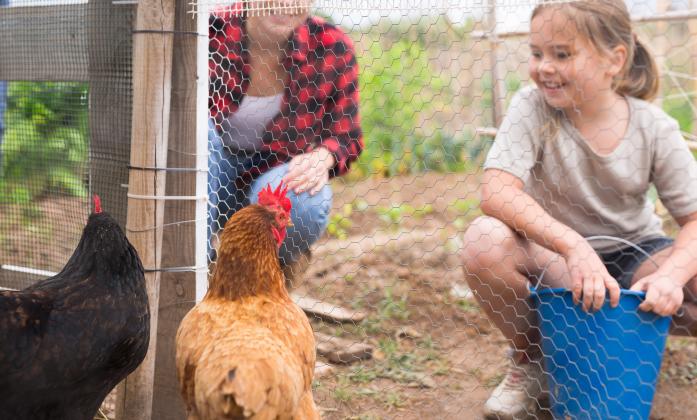Rachael Brooke - Phillips-Rooks District Extension Agent, Agriculture and Natural Resources
Backyard poultry can offer families the opportunity to raise their own meat and eggs. There are basics for purchasing and raising new chicks that will make up your backyard flock. Some basics include breed selection, brooder and housing set up, nutrition, and health.
Purchase chicks from a National Poultry Improvement Plan (NPIP) certified independent flock, hatchery, or breeder. NPIP is a State-Federal testing and certification program that tests and monitors for many diseases.
Raising day old chicks requires frequent monitoring and adjustment, a less labor-intensive option is to purchase pullets near egg production age. Pullets are typically 15–22-week-oldfemale chickens, who will start to lay around 24 weeks old and will continue for 5-10 years. Typically, the egg laying production will decrease after the first two years. Most dual-purpose hens can take six to nine months to begin laying. If your primary goal is to raise egg production pullets, it might be beneficial to order sexed chicks when purchasing, meaning they separate the males from the females. Cockerels (male chicks that are less than a year old) and roosters (males over a year of age) are only needed if you want fertile eggs for hatching or meat production.
Choosing the best type and breed of chicken for where you live, your lifestyle, and your production goals is an important first step. Most egg producers will lay around four to six eggs per week. As fall approaches and daylight is lost, egg production decreases. Some who raise chickens are looking for a well-rounded dual-purpose bird. Birds in this category are larger in body than high production pullets but will also develop enough muscle mass to be used for meat production. A well-rounded chicken will be able to handle cold weather climate, have a good disposition to be handled by children, and will be good egg producers.
Broiler breeds are extremely fast-growing chickens developed for meat production only. Typically, these birds are butchered at four pounds for smaller breeds (seven to nine weeks old), and five to 10 pounds for larger breeds (12-20 weeks old). The result is an animal meant for consumption in 7 to 20 weeks’ time depending on variety. Cockerels from multi-purpose breeds may also be butchered for meat production, but they will develop more slowly.
More information is available at https://www.asi.k-state.edu/extension/poultry/
For more information, please contact the local K-State Research and Extension Office.
K-State Research and Extension is an equal opportunity provider and employer.

